
NTT and Toyota have taken a new step toward realizing a "society with zero traffic accidents" by working together to build a Mobility AI Platform.

Nippon Telegraph and Telephone Corporation (NTT) and Toyota are deepening their collaboration, with the aim of achieving a "society with zero traffic accidents" through the power of high-speed, high-quality communications infrastructure and artificial intelligence (AI) capable of processing vast amounts of information.
On October 31, the two companies held a press conference in Tokyo to announce the joint development of a new AI platform in the mobility field.
Mobility AI Platform
Toyota and NTT began teaming up in 2017 to develop data processing platforms and other technologies necessary for the spread of connected cars*. In 2020, the two companies broadened their focus from individual vehicles to society as a whole, entering a business and capital alliance to lay the groundwork for smart cities.
*Cars capable of sending and receiving information in the same way as telecommunications devices, enabling various services and allowing them to function as sensors in society.
On that occasion, then-President Akio Toyoda shared the following words about the companies’ vision for the future:
“‘People’ are positioned right in the center of the future envisioned by both companies. People with smiles on their faces. ‘People connected’—that is the future society we are working towards.”
Some four and a half years on, NTT and Toyota have deepened this collaboration further by taking the next step toward a society with zero traffic accidents. Together, they will build a Mobility AI Platform that combines seamless communications infrastructure with AI and computing architecture that can intelligently process vast quantities of data.
At the press conference, President Koji Sato outlined Toyota’s commitment to safety.
President Sato, Toyota
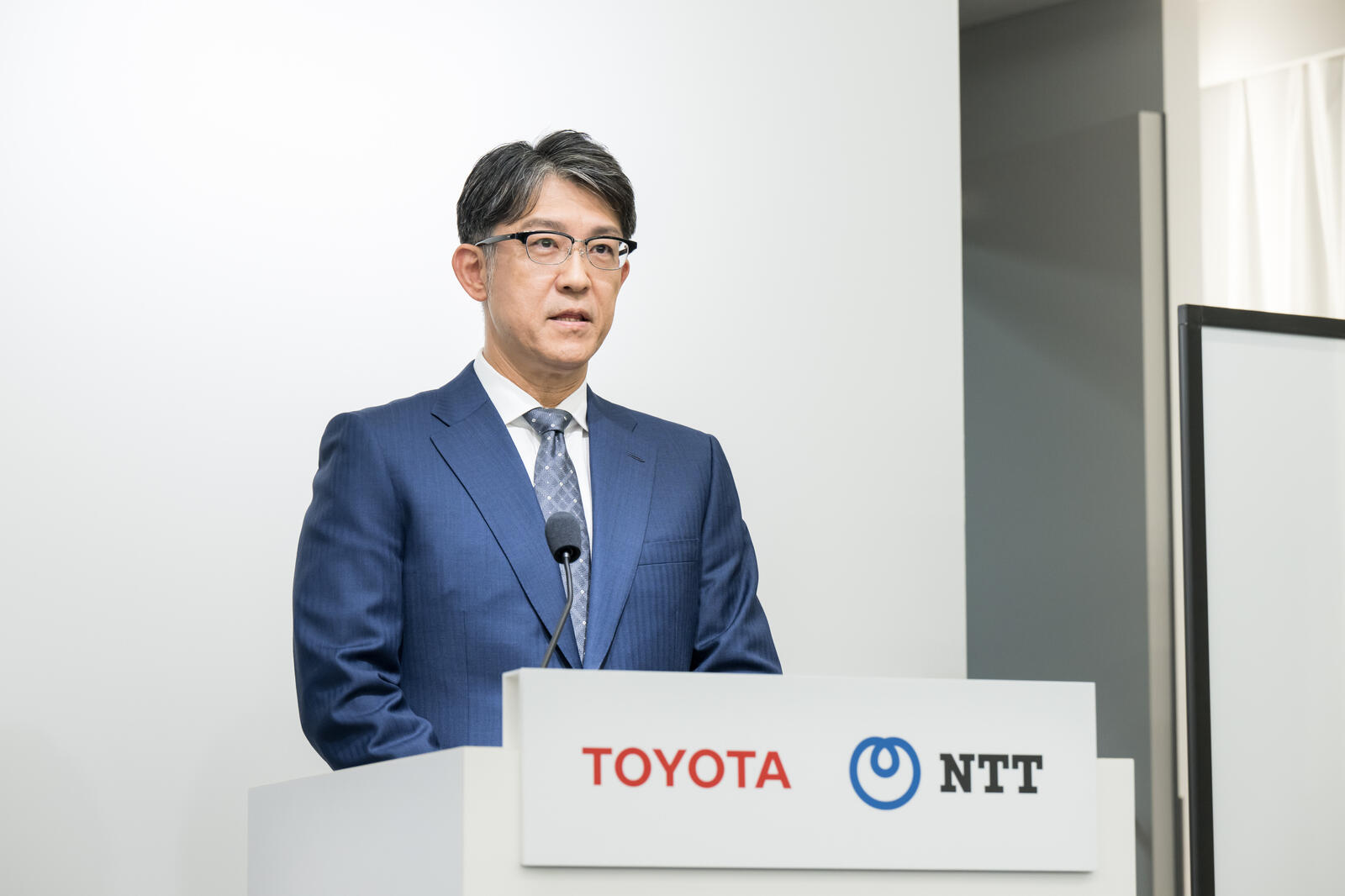
As the next step, we will work together to build an AI and communications infrastructure that will support a mobility society, with an aim to accelerate our efforts to change the future of cars.
We intend to create diverse value in mobility by expanding the value of cars and integrating cars into social systems.
We believe that the driving force of this effort will be software-defined vehicles, or SDVs*.
*Cars designed and developed with the premise of updating vehicle features via software.
As a carmaker, Toyota believes that the most important values that SDVs can provide are safety and security. In other words, contributing to achieving a society with zero traffic accidents.
This will also lead to our goal of providing mobility for all.
To create safe and secure SDVs that are connected to society, first, we will revise our software platform Arene, as well as our electronics platform.
For example, we will overhaul our electronic control systems to enable the extraction and collection of necessary data through smart and appropriate means of communication, as well as the timely updating of software.
The future of mobility, AI, and communications
Toyota’s approach to preventing accidents through SDVs consists of two broad areas.
The first is data-driven development of “advanced driving support/future automated driving systems,” in which AI will continuously learn from large amounts of on-road data and make swift software improvements.
The second element will be a three-pronged approach to infrastructure collaboration, including the collection of information from people, cars (mobility), and infrastructure to reduce blind spots.
Achieving this requires a high-speed, high-quality communications environment, even as the simultaneous handling of vast amounts of information increases traffic and data processing volumes. As the number of SDVs grows, Toyota forecasts a 22-fold increase in data traffic by 2030, requiring 150 times more computing power.
The new Mobility AI Platform that Toyota is building with NTT will comprise three elements.
1.Distributed computing platform (data centers)Distributed computing infrastructure to aggregate and process vast amounts of data collected from cars and other sources. The facilities can utilize local power sources by being located in areas with abundant renewable energy.
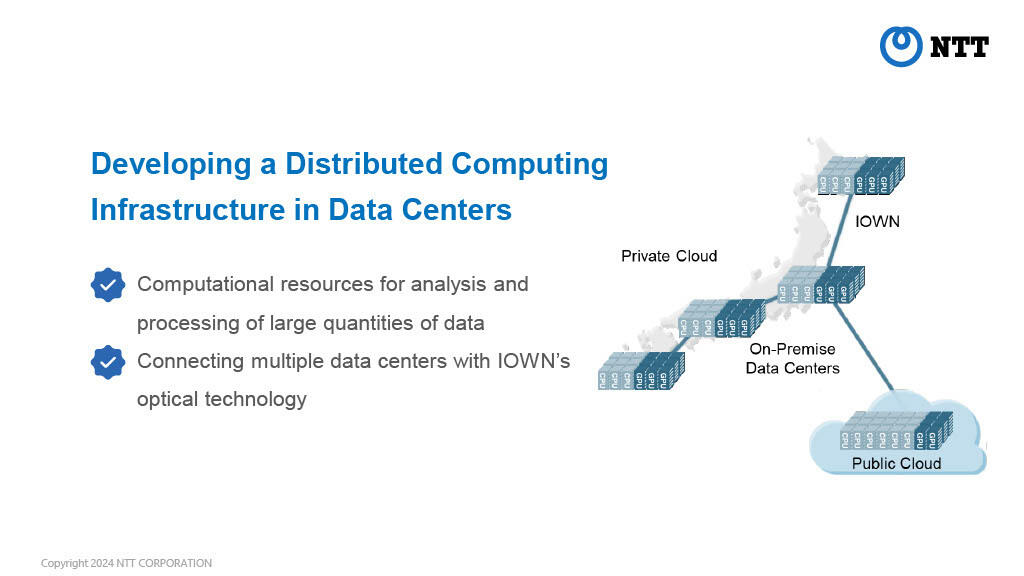
2.Intelligent communication infrastructure
A communications system that links people, mobility, and infrastructure to collect wide-ranging data and provide seamless connectivity suited to various traffic environments and conditions in urban, suburban, and rural areas.
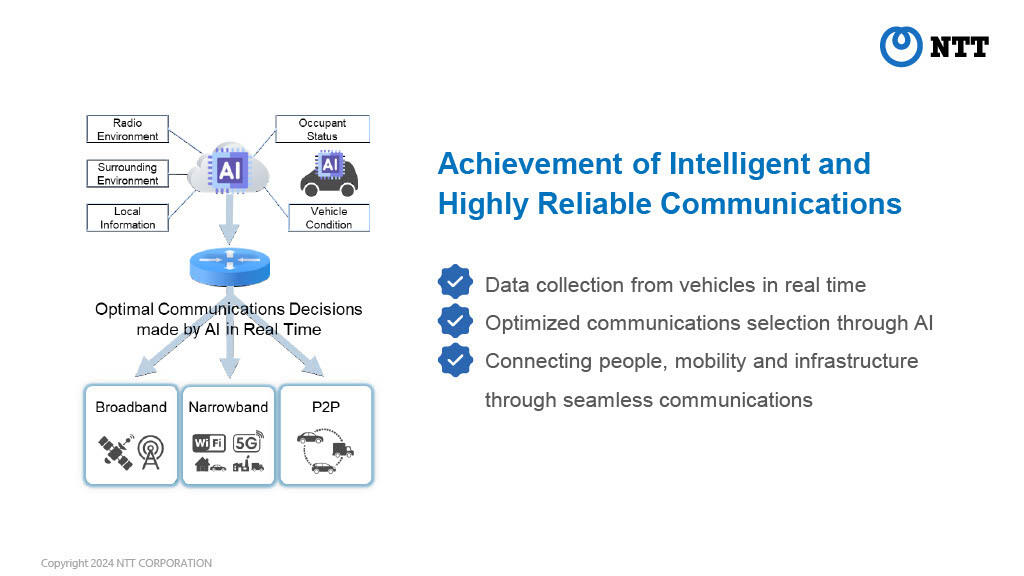
3.AI infrastructure
A platform for mobility AI that learns and reasons based on data obtained from people, mobility, and infrastructure, underpinned by distributed computing (data centers) and intelligent communication infrastructure.
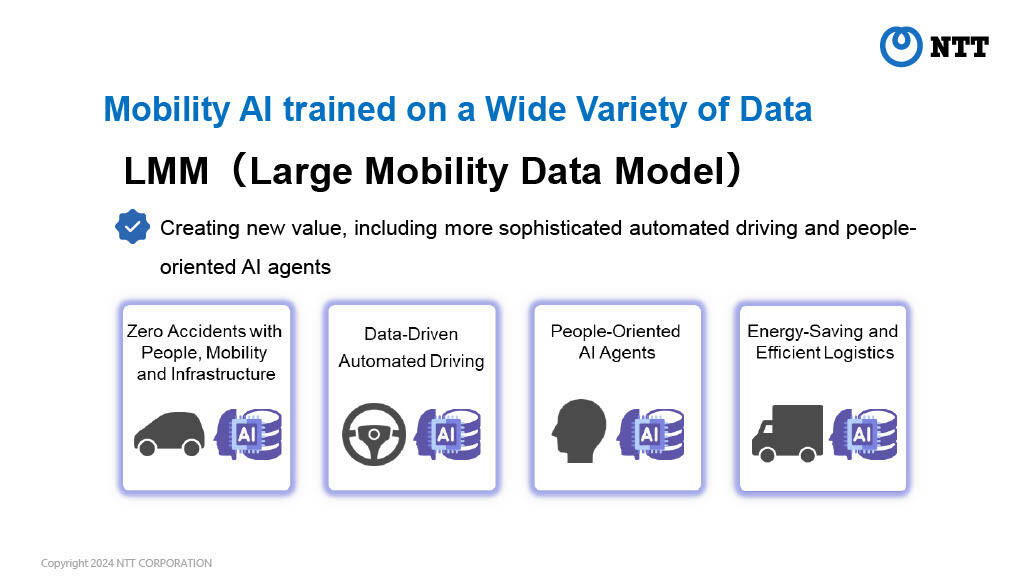
“Integrating this kind of AI will allow us to enrich society with various mobility services, including traffic accident prevention, more advanced automated driving, and AI agents attuned to people's needs,” explained NTT President Akira Shimada.
President Shimada, NTT
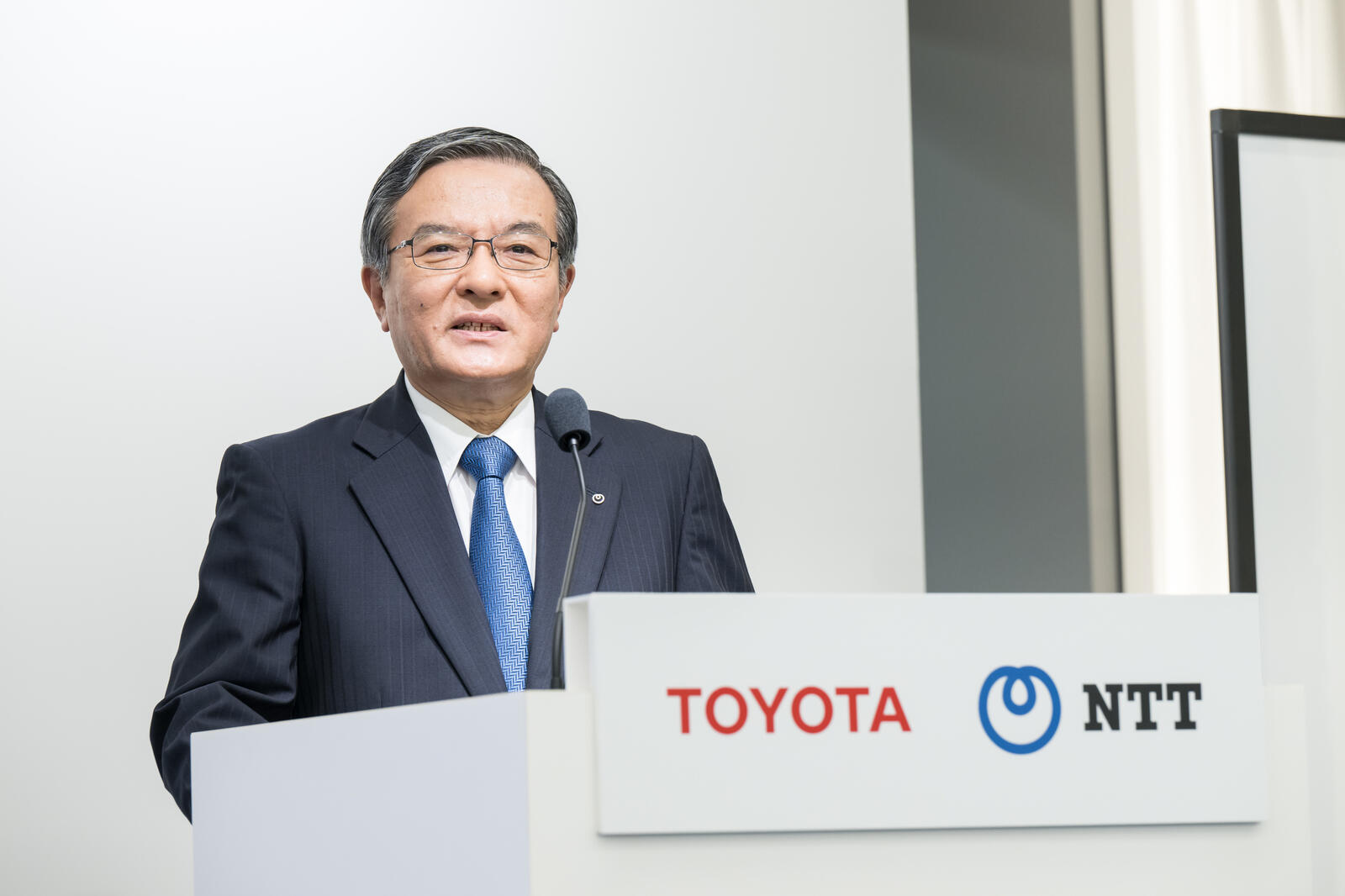
Toyota and NTT are envisioning the future of mobility, AI, and communications, to create a better world and a prosperous society.
We also want to attract more partners who endorse our efforts, expanding the reach of these initiatives.
Harnessing the human potential of both companies and our partners, we will work step by step to fulfill President Sato’s vision of “changing the future of cars” in the hope of creating a better world and a prosperous society.
We hope you will continue to follow our efforts.
Development will start in 2025 with an investment of some 500 billion yen. Public trials are set to begin around 2028, with a view to more widespread adoption in 2030 and beyond.

